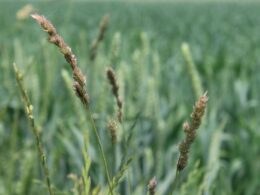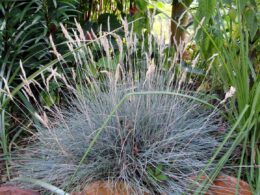Japanese Forest Grass: An Ornamental Grass
Japanese Forest Grass, sometimes called Hakone grass, is a favorite plant in the garden. The graceful arching leaves are spectacular when planted in groups. The Hakonechloa is a very attractive, brightly colored grass that is native to Japan. Its stems are lovely loose sprays of thin leaves that turn from green to gold as the weather cools. The species are noted for their foliage, which turns spectacular shades of yellow, orange, or red in the autumn. This makes the plants highly valued as ornamental plants for planting in shady parts of the garden
Appearance
Japanese Forest Grass is a perennial, clumping ornamental grass that grows 12-24 inches tall and about 18 inches wide. The grass has arching stems, which are green striped with yellow or white, depending on the variety. In the fall, the foliage turns an orange-yellow color and matures to bronze. The leaves are typically used in dried flower arrangements and flower bouquets. The flowers usually appear in summer, but are very small and almost unnoticeable.
Japanese Forest Grass Habitat and Distribution
This plant originates from the Hakone region of Japan where it grows along stream banks and in damp woodlands, because the plant does best in shade or partial shade. The most common species cultivated in landscapes is Hakonechloa macra ‘All Gold’ with yellow-green leaves and arching foliage that form a billowing mound.
Japanese Forest Grass Care
Japanese forest grass is easy to grow and maintain when there is rainfall, but it does not tolerate long dry periods. It prefers full sun or partial shade, though doesn’t do well in full shade. If it doesn’t receive enough water, the leaves will turn brown, but trimming the dead foliage off will help rejuvenate the plant.
Sunlight Requirements
Japanese forest grass needs full sun in cooler climates. This plant will tolerate partial shade in areas with hot summers. Hakonechloa cannot tolerate extreme temperatures or drought conditions at all, so be sure to keep this plant in an area with plenty of moisture and protection from hot afternoon sunshine if you live in a warmer zone.
Watering
First, it’s best not to plant in ground that is too wet and boggy. If there is standing water after heavy rain, the plant will rot and die. Japanese Forest Grass can tolerate dry conditions once established, but it can’t tolerate drought for longer periods of time. So, keep your lawn well watered during the hot summer months and make sure to water regularly when growing in containers. Do this especially after planting or in the first growing season, so the roots can establish themselves well. The grass should be watered weekly or more often if necessary.
Fertilizing
No fertilizer is needed unless your soil is very poor. If you do apply fertilizer, do so sparingly. Too much nitrogen can cause the leaves of Japanese forest grass to turn yellow and burn.
Soil
Japanese Forest Grass grows best in moist, well-drained soil with an organic content. It can be grown in full sun, but prefers partial shade and needs protection from hot afternoon sun.
Mulching
A layer of mulch will help retain moisture in the soil and keep weeds under control. Apply mulch every spring after you’ve finished cutting back the previous year’s growth.
Pruning
Japanese forest grass blooms in late summer and fall, producing flowers that rise above the foliage on slender stalks. After the blooms die back, you can remove the dead stalks at the base of the plant. The foliage will remain green until winter and then turn brown in cold weather. Cut back all dead foliage to 1 inch above ground level in early spring before new growth begins.
Where to Plant Hakonechloa Macra
It works well as ground cover or in containers or hanging baskets. When using it as ground cover, allow up to 3 feet between plants for adequate spacing between clumps. The first thing you will notice about Japanese forest grass is that it grows very slowly, so a little patience is required.
How to Propagate Japanese Forest Grass
Japanese forest grass is a lovely ornamental grass that makes a great accent plant and ground cover. It’s not the easiest grass to propagate, but with the right approach, you should be able to grow many more plants. If you want to give it a try, here are some tips on how to propagate Japanese forest grass.
Propagation by Division
The best time to propagate Hakonechloa is in the spring. Do not disturb the roots when dividing the plant because they are fragile and easily damaged. To divide, use a shovel to dig up the entire plant, then separate into smaller plants with your hands or a knife. Replant each division right away, at the same depth as before, and water well to settle the soil.
Image source: Megan Hansen via Flickr, CC BY-SA 2.0



















